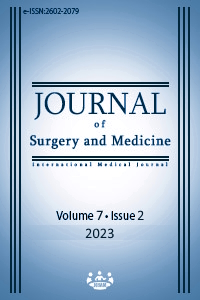Benefits of a prenatal physical preparation program on the condition of the perineum and Apgar scores at birth
Prenatal physical preparation
Keywords:
childbirth, physical preparation, pregnant womenAbstract
Background/Aim: The practice of physical activities among pregnant women remains a significant health challenge in the Democratic Republic of Congo. The aim of this study was to examine the influence of prenatal physical preparation on the state of the perineum and Apgar scores at birth.
Methods: This experimental study included 89 pregnant women, with 38 of them subjected to an 8-month prenatal physical preparation program that involved weekly sessions of 45 min of low to moderate intensity. The remaining 51 pregnant women did not participate in the program and served as a control group. The variables of interest, including episiotomy, perineal tear, intact perineum, and Apgar scores, were measured, and the chi-square statistical test was used to compare the two study groups. P-values <0.05 were considered statistically significant.
Results: The present study reveals that the women in labor in the experimental group (EG) had fewer perineal tears and less episiotomy compared to the control group (CG). Specifically, the incidence of perineal tear was significantly lower in the EG (5.3%) than in the CG (27.5%) with a P-value of 0.001, while the incidence of episiotomy was also significantly lower in the EG (7.9%) than in the CG (25.5%) (P=0.032). Furthermore, a significant number of women in the EG (86.8%) had an intact perineum compared to those in the CG (47%) (P=0.001).
Conclusion: The delivery parameters of pregnant women who followed a prenatal physical preparation program underwent significant changes compared to those who did not participate in the program. These findings suggest that the program should be continued to improve the care of women who have given birth.
Downloads
References
Carbrol D. Collection: Abbreviated perinatality, Ed. Masson, 2003, p.60-62.
Lansac J, Berger C. Obstetrics, Collection for the Practitioner, 3rd Edition, 2000.
Lansac J, Marret H. Practice of Childbirth, 3rd Edition. 2001;544(7):205-10.
Ladewing, Patricia. Nursing and Perinatal Care. 4th Ed, Saint Laurent. 2010; 1010p.
Brabant I. Living your pregnancy and childbirth, A happy birth, Edition Saint Martin. 2001;23(4):32-5.
Ageron C, Michelin JM. Practical guide to Obstetrics and gynecology. Ed. Satas, 2000.
Thoulon JM. Labor monitoring, Practical Collection in Obstetrics gynecology. 2003;34(6):345-75.
Tourris H. Illustrated summary of gynecology and of obstetrics, Ed. Masson, Paris. 2001;18(6):25-7.
Bernadette. Well-being and maternity, Marabout Editions. 2009;15-18.
Trabecchi F. Potential consequences of pregnancy and childbirth, 18th Day of gynecology of Nice and the Cte dAzur, France. May 2000;16(2):10-7.
Parant O, Reme J-M, Monorozis. Recent obstetric tears of the perineum and episiotomy. EMC (Elsevier Masson, Paris). Obstetrics. 1999;57(9):54-71.
Barot S, Tardif D. Old obstetric tears. J Gynecol. Obstet. 2010;84(3):200-10.
Ardon D, Reinbold D, Dregfus M. Episiotomy and recent obstetric lacerations. J Ggynecol. 2010;76(2):232-45.
Beucher G. Maternal complications of instrumental extractions. J Gynecol Obstet Biol Repr. 2008;37(8):244-59. DOI: https://doi.org/10.1016/S0368-2315(08)74762-8
CNOF. Episiotomy. Text of recommendations. J Gynecol Obstet Biol. Repr. 2006;35:n1:1S77-1S80.
Organisation mondiale de la santé. Recent data reveals that women are victims of ill-treatment during childbirth. October 2019.
Faltin D. Long-term consequences of perineal tears. Swiss Med J. 2017;88(10):768-74.
Said Ait L, Abdelmalek H, Khalid M. Preparation of the direct sphincter: technical points, indications and results. The Pan African Medical J. 2013;44(16):134-40.
Tayrac Which perineal protective measures during childbirth. J Gynecol. Obstet. 2017;63(7):62-9.
Frenette P. Impact of episiotomy during operative vaginal delivery on obstetrical and sphincter injuries. Journal of Obstetrics and gynecology of Canada. 2019;41(12):1734-41. DOI: https://doi.org/10.1016/j.jogc.2019.02.016
Committee report. Physical activity guidelines Advisory. Washington, DC: US. Department of Health and Human Services, 2008.
Bechmann CRB, Bechmann CA. Effect of a structural antepartum exercise program on pregnancy and labor outcome in primiparas. J Repr Med. 1990;35(19);704-9.
American College of Obstetricians and Gynecologists (ACO). Exercise during pregnancy and postnatal period. Washington (DC). ACO, 2002.
Babyak M, Blumenthal M. Exercise treatment for major depression: maintenance of therapeutic benefit at 10 months. Psychoson Med. 2000;62(4):633-8. DOI: https://doi.org/10.1097/00006842-200009000-00006
Clap J.F, The effects of maternal exercise on early pregnancy out as. Am J Obstet Gynecol. 1989;16(161):1453-7. DOI: https://doi.org/10.1016/0002-9378(89)90903-4
Hall DC, Kaufmann DA, Effects of aerobic and strength conditioning on pregnancy outcomes. Am J Obstet Gynecol. 1987;157(76):1199-03. DOI: https://doi.org/10.1016/S0002-9378(87)80294-6
Mersy DJ. Health benefits of aerobic exercise. Postgrad Med. 1991;90(103):110-2. DOI: https://doi.org/10.1080/00325481.1991.11700983
Lawani M.M, Alihonou E, Akplogan B, Poumart, Okou L. The effect of prenatal gymnastics on childbirth: study of 50 sedentary Beninese women during the 2nd and 3rd trimesters of pregnancy. Health. 2003;13(4):235-41.
Owe KM, Nystad W, Stigum H, Vangen S, Bø K. Exercise during pregnancy and risk of cesarean delivery in nulliparous women: a large population-based cohort study. Am J Obstet Gynecol. 1 déc 2016;215(6):791.e1-791.e13. DOI: https://doi.org/10.1016/j.ajog.2016.08.014
Virginia APAR. Evaluation of the physical health of newborns, 1953.
Morkved S, Bo K, Schei B, Salvesen KA. Pelvic floor muscle training during pregnancy to prevent urinary incontinence; A single-blind randomized controlled trial. Obstet Gynecol. 2003;101(2);313-9. DOI: https://doi.org/10.1097/00006250-200302000-00018
Downloads
- 396 534
Published
Issue
Section
How to Cite
License
Copyright (c) 2023 François Njimbu , Iness Bilo , Andy-Muller Nzinga, Teddy Bofosa , Eric Kam , Anselme Paka, Augustin Buhendwa, Vicky Lokomba , Roger Mbungu , Betty Miangindula
This work is licensed under a Creative Commons Attribution-NonCommercial-NoDerivatives 4.0 International License.
















